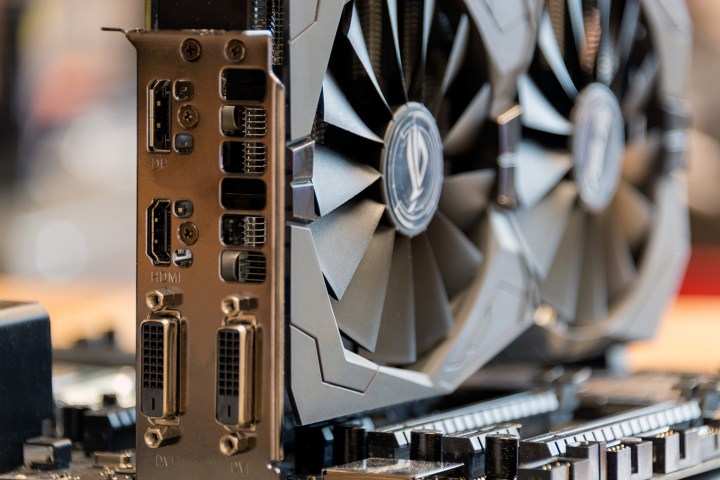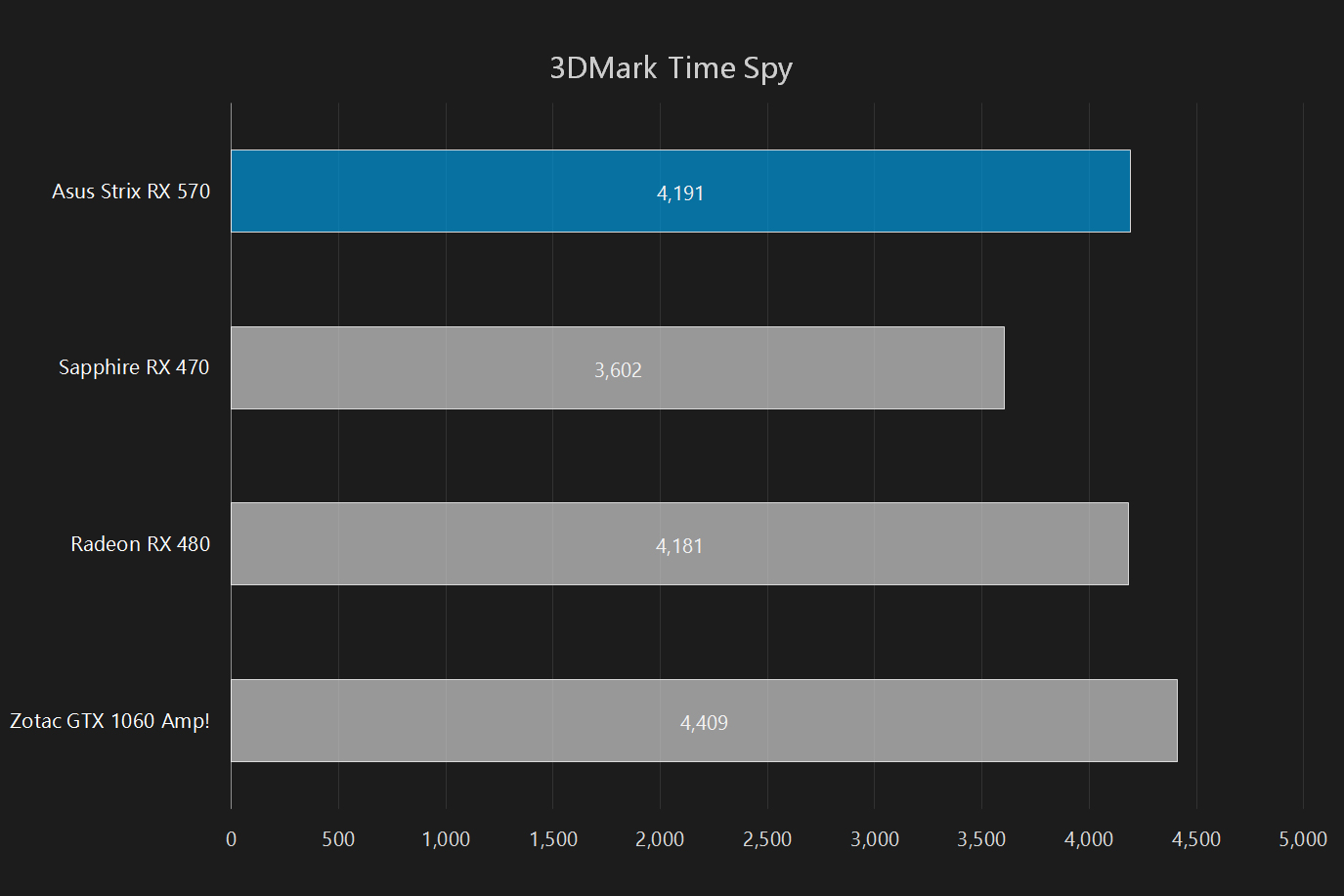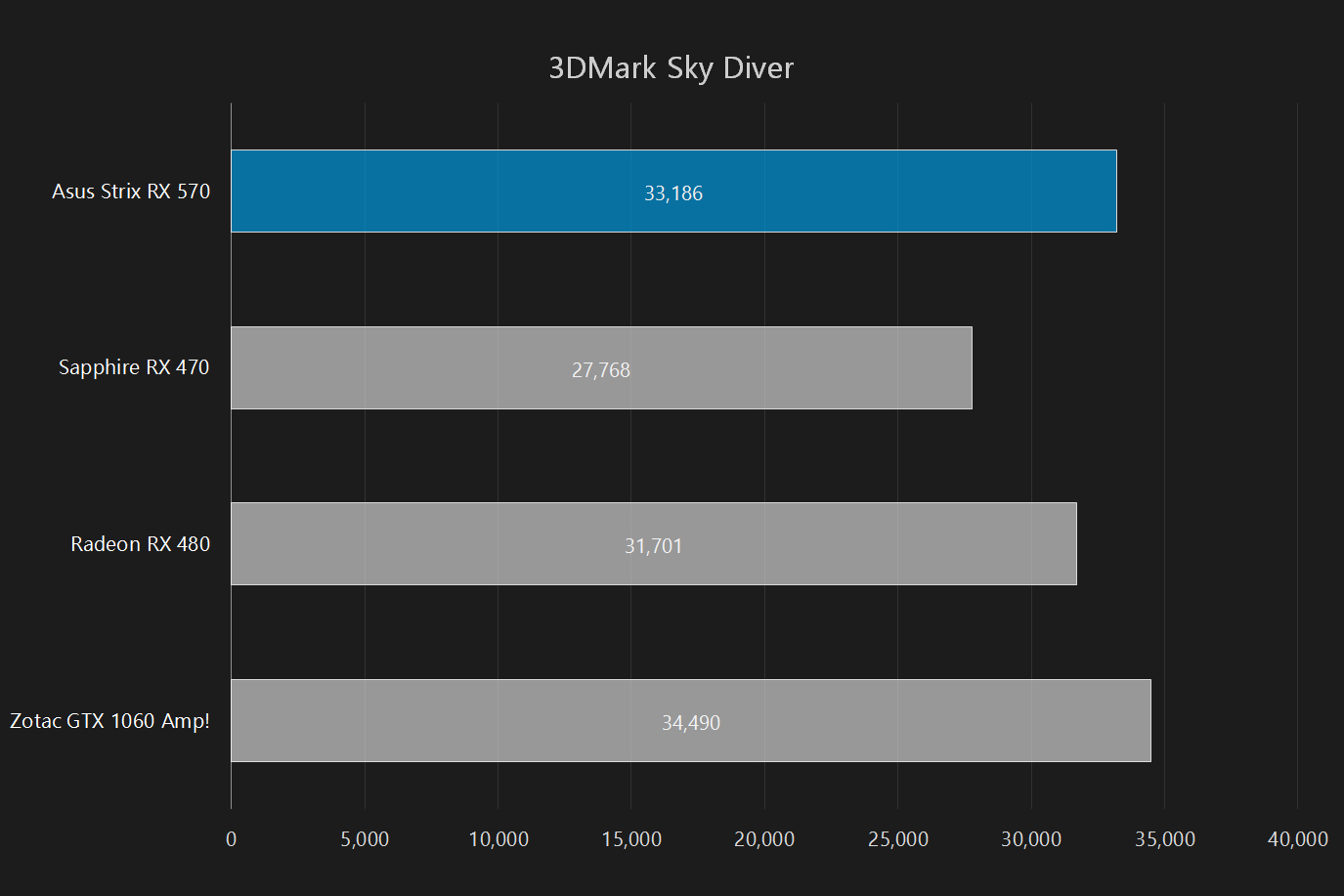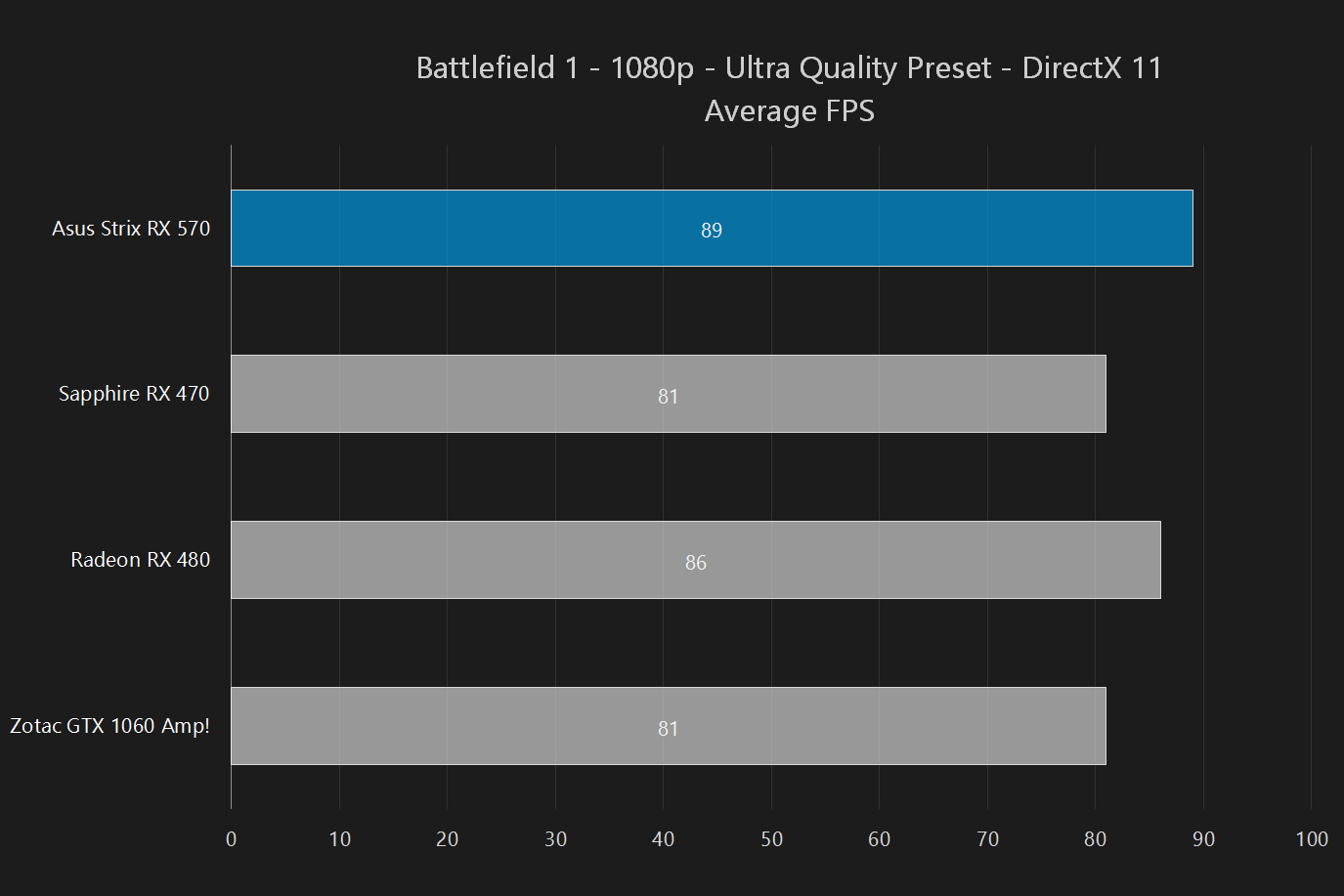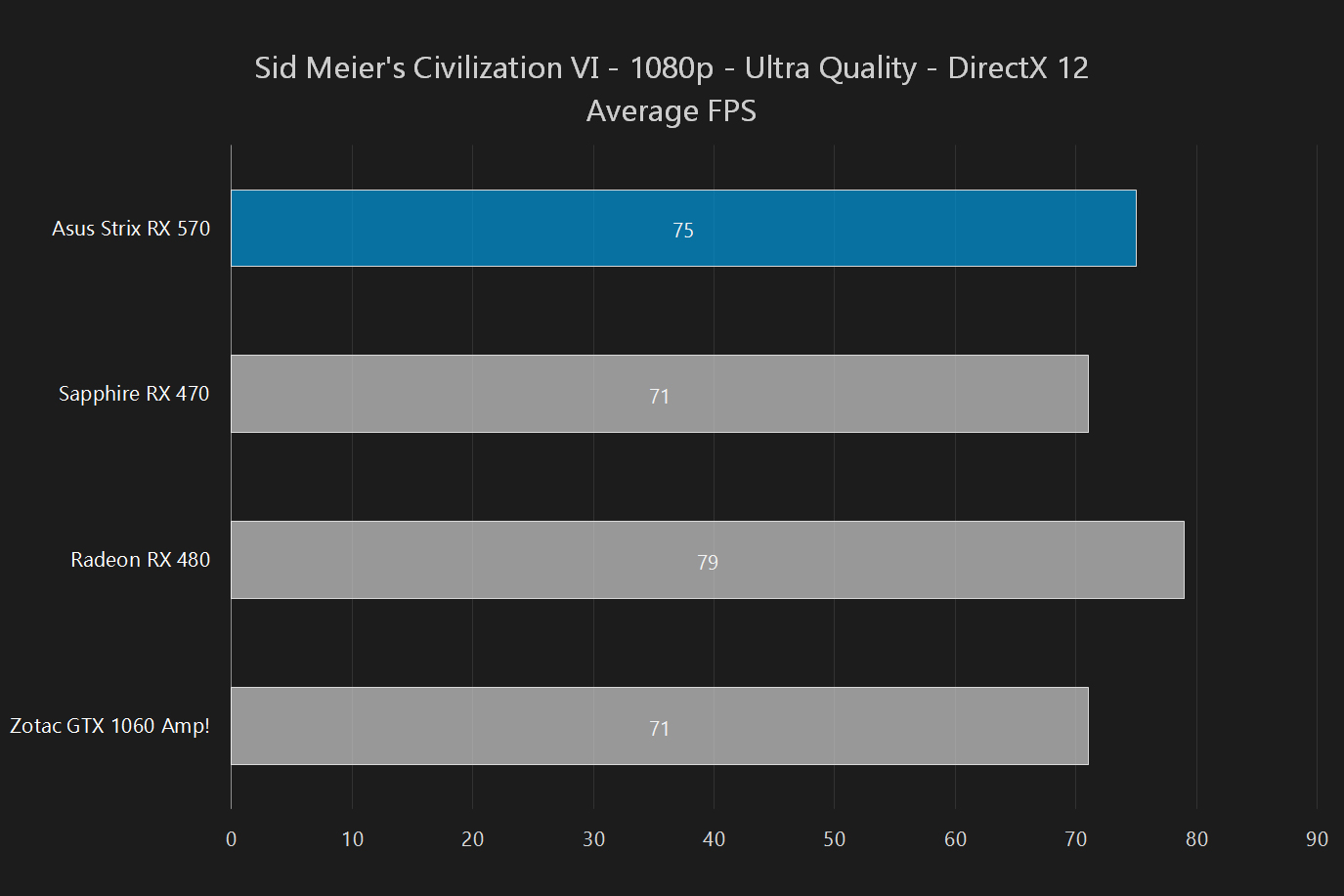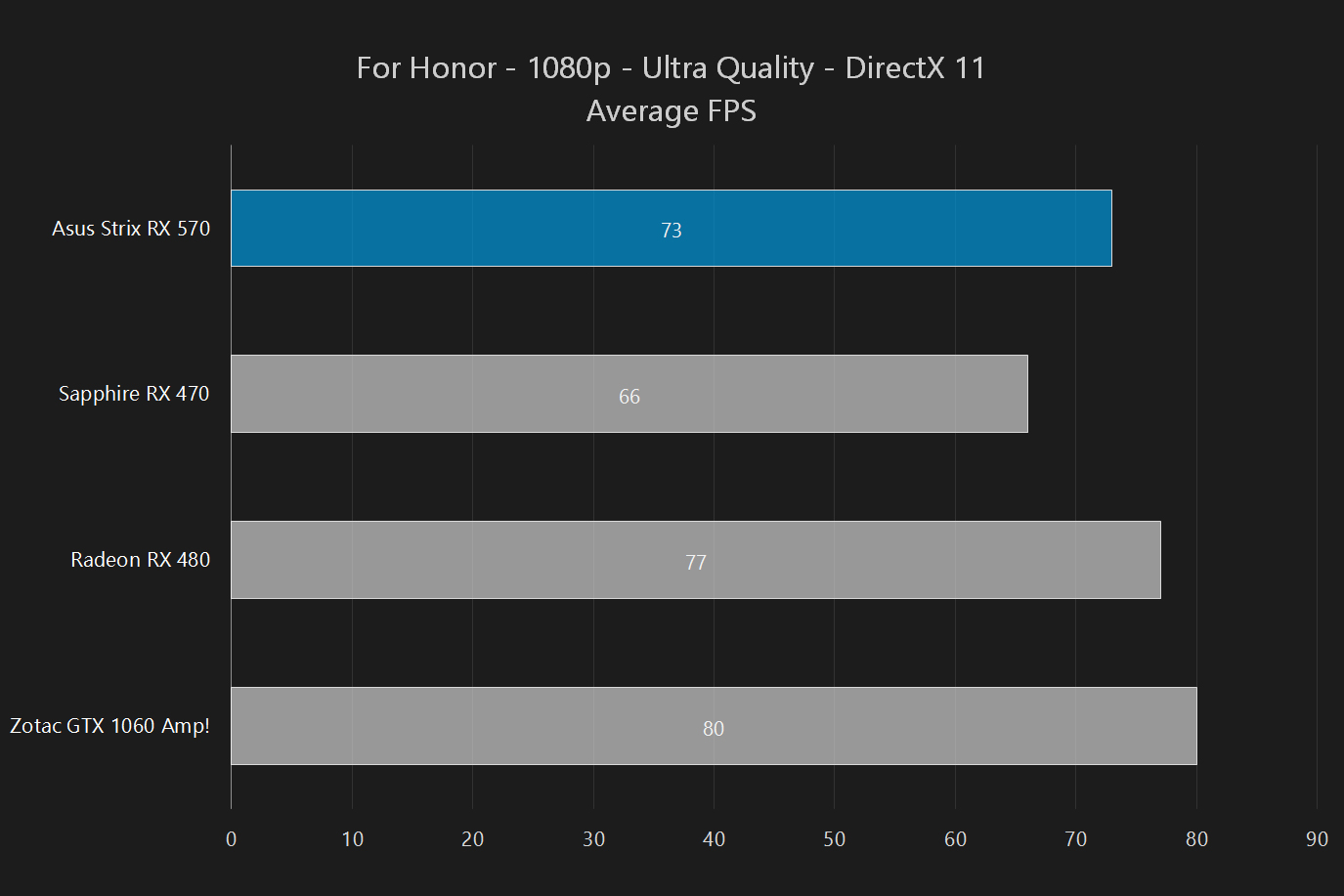- Strong 1080p performance
- Compact design
- Sub-$200 price point
- Strong warranty on Asus Strix model
- Higher power drawn than Nvidia peers
- Dual-DVI on Asus model feels outdated
AMD’s Radeon RX 480 made a big splash when it landed last year, and for good reason. At just $200, the card pumped out a reliable 60 frame per second at 1080p, and even reached that in some titles at 1440p. The RX 470, which was just $20 cheaper, didn’t produce quite the same value.
Now, AMD has introduced the RX 500 series, and it is trying to make the RX 570 more relevant than its predecessor. While the Asus Strix RX 570 with 4GB of memory which received for review retails at $190, the base MSRP for the basic RX 570 is only $170. Yet AMD says the card can defeat both the RX 480 and, more importantly, Nvidia’s GTX 1060.
Does the red team’s new budget-friendly GPU conquer its predecessors, or leave users hungry for more power?
Strix makes a difference
AMD previous Radeon RX series GPUs blew us away with their price per performance, but the RX 470 didn’t distance itself enough from the RX 480. With a slim price difference between the cards, the noticeable performance boost by moving to the higher-end card was too good to pass up.
On paper, the RX 570 does look strikingly familiar to the RX 470. AMD has bumped the base clock from 926MHz to 1,168MHz, and the boost clock from 1,206MHz to 1,244MHz, but left the card with the same 2,048 stream processors and 32 compute units. Our Asus Strix unit had a moderate overclock that pumps the maximum boost clock up to 1,278MHz. The thermal design power was up to 150 Watts from 120 Watts, at least on the reference design, but board partners may raise or lower that as needed.
While connectivity can vary across different models as well, our Asus Strix offered what might be considered a typical selection. It had an HDMI 2.0 port, DisplayPort, and a pair of DVI inputs. Currently, it would be nice to see two of the former, and only one of the latter, but it’s hard to nitpick too much over that. Asus also bumped the boost clock to 1,300MHz, and the memory clock to 1,750MHz up from 1,650MHz. A modest overclock on both counts, but enough to warrant the price bump.
All said and done, the Asus’ Strix offering offers some solid improvements on the reference design for just $20. It has RGBLED lighting, a four-pin fan header, overclocking, and a long warranty, which should draw the eyes of users looking for a premium SKU on the RX 570.
In the lab
Before we cracked into gaming tests, we ran the Asus Strix RX 570 through a set of synthetic 3DMark benchmarks. The tests stressed the GPU to its maximum potential, and gave us a very clean data set to compare.
Importantly, the RX 570 beat out the previous generation RX 480 in every one of the 3DMark tests. That’s no small feat, but it does make sense, considering the RX 570’s bump up to a 150-watt Thermal Design Power, the same as the RX 480 last year.
The RX 570 just barely fell short of the GTX 1060, although it’s worth noting our review unit was a $240 Zotac Amp! edition with 6GB of memory and a modest overclock. GeForce GTX 1060 models closer to reference will likely trade blows with the RX 570, which is good news indeed for Radeon. Nvidia may be forced to respond with a price drop.
On the open road
3DMark is just part of the story, however. Our game test suite tells the rest of the story. It includes four games – Battlefield 1, For Honor, Deus Ex: Mankind Divided, and Civilization VI. The first two were tested in DirectX 11, while the latter two were tested in DirectX 12.
There’s more good news for Radeon here. The RX 570 managed to pump out at least a pleasing 60 frame per second in every test except for Deus Ex: Mankind Divided, which did not surprise us, because it’s by far the most demanding game in our test suite. That game pushes even high-end cards to their limits, and a score of 47 FPS at 1080p and the ultra-quality preset is a very strong score for a $190 video card.
However, the card did behind the RX 480, although just barely. It won by a few frames per second in Battlefield 1, but at over 100 average FPS, it’s unlikely anyone will notice. All the cards we tested, including the Nvidia GeForce GTX 1060, fall very close to each other in terms of raw frame rate, which makes it tough to recommend any one of these cards over the other, except when it comes to price. The RX 570 has a strong lead there, making it the value champion.
Warranty information
Asus covers the Strix RX 570 for a full three years after purchase. That’s a strong warranty for a GPU, particularly a mid-range model, and it’s the standard for the Asus ROG Strix series cards. It doesn’t cover damage from overclocking or maintenance by hand, so think twice before you swap out the cooler.
Our Take
The RX 570 rivals both the AMD Radeon RX 480 and the Nvidia GeForce GTX 1060 in performance. There’s no reason to reach for the RX 400 series cards now, unless there’s an insane deal on one. At $190, our Asus Strix review unit falls very close to the RX 580’s $200 starting price point, which could hurt the RX 570’s value proposition. We’ll make sure to update this review once we have a proper RX 580 review unit.
Is there a better alternative?
With a bump to its clock speed, the Asus Strix RX 570 competes directly with Nvidia’s GeForce GTX 1060, although the Zotac Amp! version we tested still edged out a victory. The GTX 1060 will use less power, but we’re not sure that matters for most gaming rigs. The AMD Radeon RX 580, which starts at $200, is also a good option, though upgrading to it from the RX 570 is not necessary to enjoy modern games at 1080p and 60 frames per second.
How long will it last?
While it would be easy to say the performance alone is enough to last you a few years, it’s worth noting here that the RX 570 is a second-generation Polaris chip, and as such, doesn’t have any new features to boast about. A three-year warranty certainly sweetens the pot, if you choose Asus’ Strix card. It produces solid 1080p gaming performance, which is enough for most users now, but that may change with time. Anyone who want the latest feature set will have to wait for AMD’s upcoming Vega architecture, which has no release date.
Should you buy it?
Yes. The RX 570 improves on the RX 480’s performance at a lower price point, and that is enough to recommend it. It breaks 60 FPS in almost every game we threw at it, at least at 1080p, something other cards under $200 struggle to do. It may use a bit more power, but the RX 570 continues AMD’s high-pressure pace in the mid-range category, in a way that should have the green team shaking in its boots.



